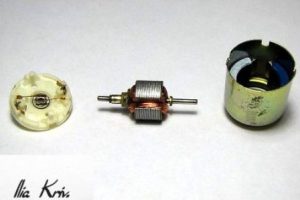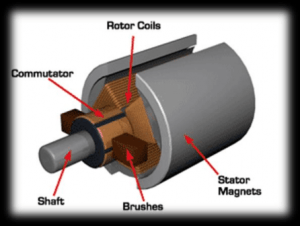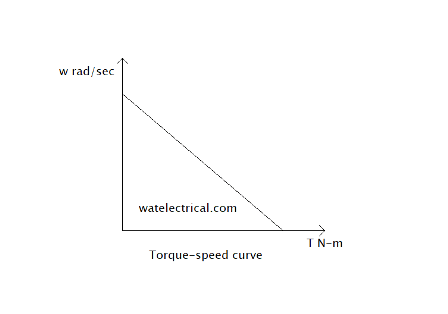The first motor I,e permanent magnet was first invented by Hungarian scientist Istvan. He invented the first PMDC that works on the usage of permanent magnetic field interaction. But these motors faced several constraints to work practically. In 1882, John Urquhart suggested using electromagnets instead of permanent magnets. Early twentieth-century, the permanent magnets secured much importance because of the invention of these magnets made of high-quality magnetic material. In the 1930s, permanent magnets made of iron and cobalt can retain their strength for a longer time. Therefore, these materials also secured prominence importance and also faced fewer difficulties in practical use too. So let us discuss in detail about this motor working which we are experiencing on a daily basis. In this section, let us know what is a PMDC motor, its Definition, construction, working diagram, speed control, advantages, disadvantages, and purposes.
What is a PMDC Motor?
Definition: It is a type of motor similar to that of a normal motor but the difference is it has no field coil. It generates torque by the interaction of armature flux and permanent flux. The armature of this type of motor is shown in the figure below.

Disassembled Motor
Construction
It consists of a frame in which the inner peripherals of the motor are inserted. It acts as a protected shield to the motor. The frame is of a cylindrical shape made of silicon steel to avoid losses. The permanent magnets are placed inside the cylindrical tube which acts as a stator. The moving section consists of armature core and bearings. The armature core includes commutator and brushes. The armature core consists of some slots in which the armature winding is housed. The commutator acts as a converting device and brushes are used to supply the current to the commutator. The DC supply is applied to the armature by connecting the terminals to the brushes.

Working
The working of this type is similar to that of a normal DC motor. It runs approaching the origin of Electromagnetic Induction. Here the magnetic induction occurs between the armature field flux and permanent magnet field flux. Due to the interaction of these fluxes, a torque is developed. Let us discuss in detail how this torque is developed.
We know that according to the Lorentz force equation a current-carrying conductor placed in a magnetic field exhibits a force in a particular direction. In view of this statement, in this motor, the armature core is set below the impact of a permanent magnetic field and given a DC supply. Due to this, the current starts to flow in the armature winding and the coil gets energized. At this time, as these current-carrying coils are under the magnetic field a force is exhibited on these coils. This force tends to move the coil in a particular direction. Fleming’s Left-hand rule is used to know the movement. Accordingly, the coils exhibit some force in a particular direction and tend to rotate.
PMDC characteristics
The voltage equation of this type of motor is given by
V = Kt w + IR + L dI/dt
At steady-state condition, the current is considered as zero, then dI/dt = 0. The final equation that we get is V = Kt w + IR.
The equation in terms of w rad/sec keeping torque constant we get
W = V / Kt – R/ Kt2 Ƭ
The above equation determines the relation between torque and speed. From this, we can draw the curve between torque and speed.
The curve drawn between torque and speed is explained as below.

Speed Torque Curve
W = V / Kt gives the no-load speed of the motor.
Speed Control of PMDC Motor
The speed control of a normal motor can be done by either varying the field flux in series with armature or by varying the voltage applied. But in this motor, as a field winding is not in series with its armature it can be controlled by varying the voltage applied.
We know that in DC motor
E α φ N
E α φ N
T α Ia φ
T α Ia
V = E + Ia Ra
V = KN + Ia Ra
N = V – Ia Ra / K
In permanent magnet type, as the field is constant we can omit flux. The armature has some resistance which can be varied. Hence, by varying resistance and voltage speed of this motor can be controlled.
The difference between the winding diagram of a normal and this motor is explained.
Advantages
- Highly efficient
- Loss of power losses
- Smaller size
Disadvantages
- Low torque
- De-magnetizes the flux
- More protection is required
Applications
- It is used small toys, trimmers, hairdryers, shavers, air cleaners, vacuum cleaners, mixer grinders, exhauster fans, and battery operations.
- It also finds application in domestic appliances.
So, we had discussed what is a PMDC motor. It is a small motor that finds its application in daily used appliances which uses its armature flux to interact with the permanent magnets and develops torque. And we had also discussed its definition, construction, working, speed control, characteristics, advantages, disadvantages, and employment. Here is a question for the readers, Explain the characteristics of a DC motor?